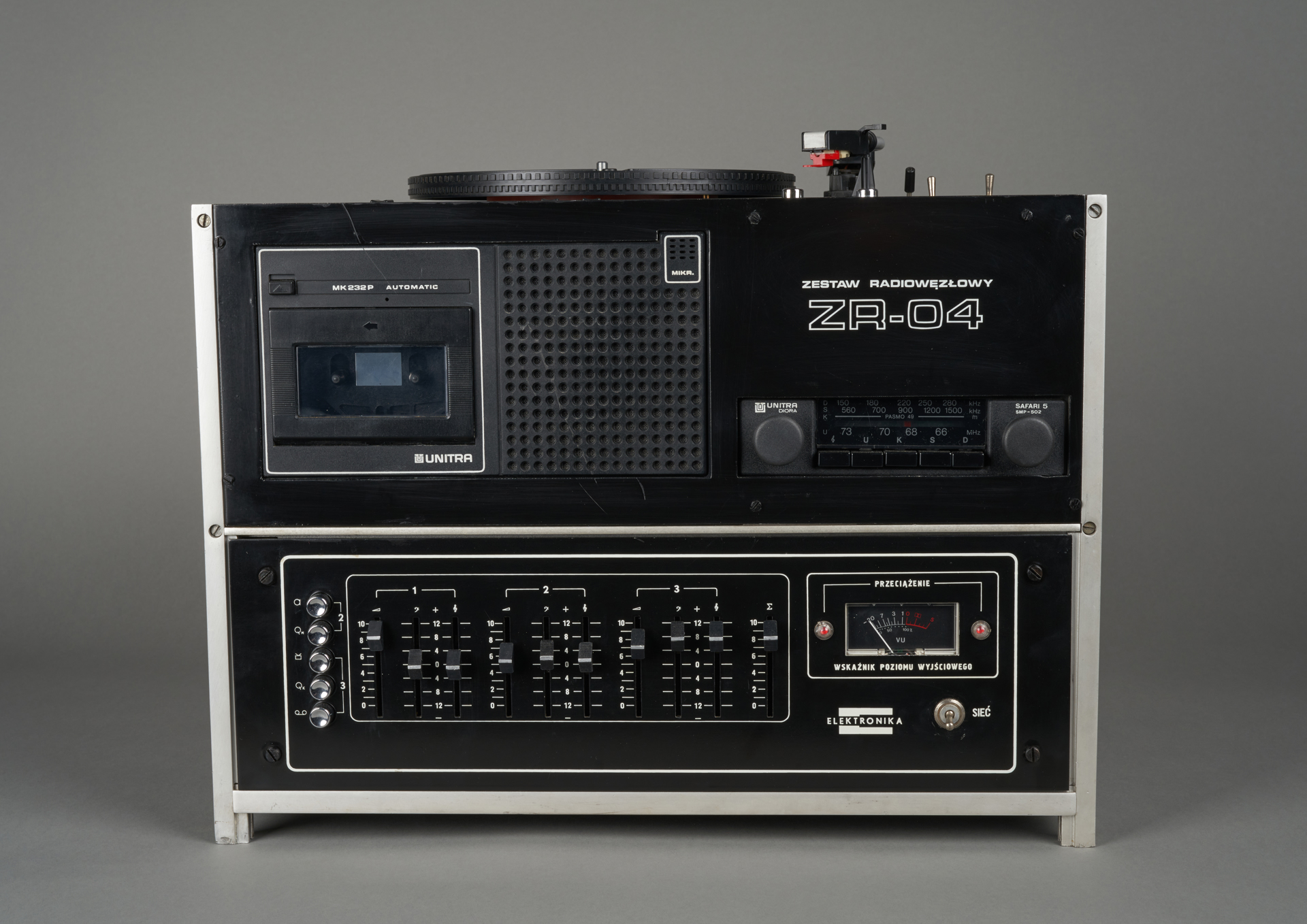
ZR-04 broadcasting system
Zrzeszenie Przedsiębiorstw Przemysłu Elektronicznego UNITRA, Zakłady Radiowe Diora, Łódzkie Zakłady Radiowe Fonica, Zakłady Wytwórcze Magnetofonów Uni,Creator
Zrzeszenie Przedsiębiorstw Przemysłu Elektronicznego UNITRA, Zakłady Radiowe Diora, Łódzkie Zakłady Radiowe Fonica, Zakłady Wytwórcze Magnetofonów Uni
Time and place of creation
Place:
Poland
The ZR-04 broadcasting system was manufactured in the 1980s by Zrzeszenie Przedsiębiorstw Przemysłu Elektronicznego Unitra. It was the final stage of communist Poland, which had an impact on the scale and methods of production of consumer goods. Society was becoming poorer, and the nation’s economy was struggling. Hence, for the electrical engineering industry, the period saw a major slowdown in comparison with the dynamic growth of the 1970s. The ZR-04 broadcasting centre is a material testament to such conditions. It is not an original device, designed from scratch, but a contraption put together from production overages. Several devices fulfilling complementary functions were enclosed in a single body – each manufactured by a different enterprise in the Unitra group. The ZR-04 broadcasting centre comprises: the MK 232P Automatic cassette recorder produced by Unitra Lubartów under licence from Grundig; the Safari 5 SMP 502 car radio produced by the Diora factory in Dzierżoniów; the G-902fs Emanuel gramophone from Fonica in Łódź; an Elektronika amplifier.
A broadcasting centre is the core of a wired public address system. It is the source station allowing creation, broadcasting, and application of programmes in the form of electrical signals sent via cables to receiving devices such as speakers. The device enables the management of a set of amplification devices embedded in the infrastructure of public utility buildings, such as schools, boarding houses, offices, railway stations, or facilities related to communal life – workplaces, prisons, or supermarkets. In this way, the broadcasting centre, using built in devices, as well as thanks to the ability to connect a microphone, allows transmission of diverse content using direct messages and musical recordings.
Devices of this kind first began to appear in the 1920s, when the first horn speakers and megaphones were developed and almost immediately found use in providing public announcements in public places, such as gathering areas or stadiums. As amplification devices were developed that could be used in cinemas, work progressed on systems for amplifying the electric signal, which allowed amplification of sound volume. At the same time, public announcement systems were introduced in schools in the United States, while in the Soviet Union they were used for propaganda purposes in factories, streets and collective farming establishments (Rus.: kolkhoz – which is why simple speakers with a volume knob were dubbed “kolchozniks”). In socialist countries such systems were widely used from the 1950s until the 1970s, when new means of communication began to take their place.
Author: Filip Wroblewski
ZR-04 broadcasting system
Zrzeszenie Przedsiębiorstw Przemysłu Elektronicznego UNITRA, Zakłady Radiowe Diora, Łódzkie Zakłady Radiowe Fonica, Zakłady Wytwórcze Magnetofonów Uni,Creator
Zrzeszenie Przedsiębiorstw Przemysłu Elektronicznego UNITRA, Zakłady Radiowe Diora, Łódzkie Zakłady Radiowe Fonica, Zakłady Wytwórcze Magnetofonów Uni
Time and place of creation
Place:
Poland











